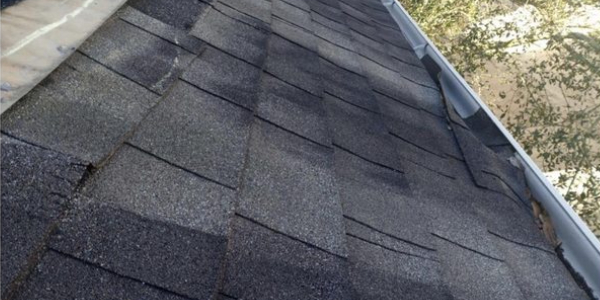6 Misconceptions About Ventilation

By Quarrix.
If you are doing research for renovating your roof, you no doubt have heard some of these ventilation myths; here is the truth.
Renovating a roof means making a lot of decisions, from choosing a color for your shingles to researching the role those other materials play in your roof's durability. It is easy to overlook something like ventilation when you have so many other choices to make. However, ventilation can impact curb appeal and the overall lifespan of a roof, so it is well worth your attention.
Here we will dispel common ventilation myths so that you can skip past them on the path to making informed decisions.
Myth No. 1 - Color is your most important roofing choice.
You’ll no doubt hear the myth regarding color’s importance over and over. When you do, you’ll also usually see some statistic about the best colors for resale value, etc.
However, if your goal is to live in a home with the best roof you can afford, then your focus should instead be on your roof’s ventilation system. Your roof’s ventilation system manages moisture levels and plays a vital role in how your home handles Mother Nature. The better your ventilation system, the lower the chances are that you’ll be replacing your roof twice in your lifetime.
Now let’s go back to curb appeal for a moment because your home’s ventilation system can play a vital role here as well. The choice you make between ridge ventilation or static vents can have a dramatic impact on the curb appeal of your home. That’s because while ridge ventilation is installed in a continuous, nearly invisible line along the roof peak, static vents are bulky appendages that are intermittently installed and stand out like tacked on afterthoughts.
Myth No. 2 - Your contractor will choose the best ventilation for your roof.
You can’t afford to let this myth become fact and you shouldn’t assume that your contractor will choose a ventilation system that is best for your home's needs. Many contractors will just recommend using whatever type of ventilation was previously installed. Not all roofing ventilation is created equal though and not every type of ventilation can be installed with every roof material. Ridge vents, for example, are the only style versatile enough to work with any variety of shingle, shake, flat tile, metal or stone-coated steel.
Different vent types have different benefits — some roof vents provide better curb appeal, some vents provide continuous as opposed to zonal ventilation, and some vents get installed at the peak while others will be installed off the ridge. Rather than letting your contractor make the choice for you, it’s best to research your options and determine what works best for your home.
Myth No. 3: -Attic ventilation won’t extend the life of your roof.
Good news, this one is absolutely false. In fact, it’s quite the opposite. To rid your attic of moist air before it can seep beneath the insulation, decking and roof coverings causing irreversible damage, you need ventilation that provides superior airflow at the highest point of the roof. Ridge ventilation is the most efficient system you can install. Partner this with an industry-leading warranty, and your ridge ventilation solution will support your home now and in the future.
Myth No. 4 - You can never have too much attic ventilation.
Yes, yes, you can. When it comes to attic ventilation, more is not necessarily better and in many cases it’s worse. Proper attic ventilation is a balancing act between intake and exhaust. Intake is the air that comes into your attic from the outside, usually in the soffit (your roof overhang). Exhaust refers to the vent openings at or near the peak of your roof that let hot and stale air out from inside your attic. If you have too much of either, your system will become imbalanced, disrupting the airflow in your attic. With too much exhaust, your vents can actually start drawing in air and moisture, instead of letting air out.
To balance your system, you need the same amount of NFA coming in as going out of your attic space. NFA is a ventilation measurement that tells you exactly how much room there is to move air through your vent. However, it won’t tell you how the vent will perform. That is determined by the vent’s design, material, paired intake and other factors.
When working with a qualified roofing installer, they will calculate your ventilation needs and determine your home’s balancing requirements.
Myth No. 5 - Two types of roof exhaust are better than one.
Some things simply go better together, multiple ventilation types on your home isn’t one of them. In fact, doing so can increase your risk of short-circuiting your system leading to weather infiltration and increased energy bills for you.
Instead of adding a second ventilation option to overcome your challenges, the better solution is to right-size your current ventilation system — or to replace it entirely. Strive for a cohesive solution and your home will be better for it.
Myth No. 6 - Icicles are a natural phenomenon of winter and do not have any effect on your roof.
They look pretty, it’s true, but when it comes to your roof, every icicle may as well be a flashing warning sign. Your attic is improperly ventilated.
Icicles are caused by the unvented warm air that rises through your attic to melt the snow on your roof. That melted snow trickles down to the edge of your roof and refreezes, causing ice dams and icicles to form. Ice dams can warp your shingles or develop into pesky leaks. In addition, their sheer weight can damage your gutters.
Fortunately, ridge ventilation rids your home of that warm, moist air before it gets close enough to your roofing materials to become problematic. Correctly adjust your ventilation system and you’ll have to enjoy an icicle spectacle elsewhere. For your home, that’s a very good thing.
Stepping away from the myths to find the right solution
Renovating your roof is a big project. You owe it to yourself and your home to do your homework before determining the best course of action. Just remember to double check what you read to ensure that you’re dealing with facts and not getting mired in myths. Your home and your future self will thank you for it.
Have a question? AskARoofer.
Find your local roofing contractor in the RoofersCoffeeShop® Contractor Directory.
Original article source: Quarrix













Comments
Leave a Reply
Have an account? Login to leave a comment!
Sign In